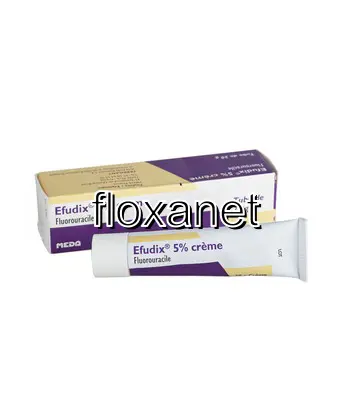| Package | Dosage | Price | Price per Dose | |
|---|---|---|---|---|
| Dosage: 1% | ||||
| 5 tube | 1% | CAD98.00 | CAD19.60 | |
| 4 tube | 1% | CAD92.23 | CAD23.06 | |
| 3 tube | 1% | CAD80.70 | CAD26.91 | |
| 2 tube | 1% | CAD61.48 | CAD30.73 | |
| Dosage: 5% | ||||
| 5 tube | 5% | CAD240.22 | CAD48.05 | |
| 4 tube | 5% | CAD207.55 | CAD51.89 | |
| 3 tube | 5% | CAD172.95 | CAD57.66 | |
| 2 tube | 5% | CAD134.52 | CAD67.25 | |

Fluorouracil Description
Overview of Fluorouracil
Fluorouracil, commonly known as 5-FU, is a well-established chemotherapy medication used primarily in the treatment of various types of cancer. It belongs to the class of drugs known as antimetabolites, which interfere with DNA synthesis and cell replication. Due to its targeted action, Fluorouracil has been a cornerstone in oncology for many decades, especially in the management of cancers such as colon, breast, stomach, and skin cancer.
How It Works
This medication works by mimicking the natural nucleotide uracil, integrating into the RNA and DNA of rapidly dividing cancer cells. This incorporation disrupts normal nucleic acid functions, ultimately leading to cell death. Because cancer cells tend to multiply faster than most normal cells, Fluorouracil selectively targets tumor tissues, making it an effective option in chemotherapy regimens. Its mechanism also allows it to interfere with thymidylate synthase, an enzyme essential for DNA replication, further inhibiting cancer cell growth.
Administration and Usage
Fluorouracil can be administered in various forms, including intravenous injections, topical creams, and sometimes as a leucovorin adjunct to enhance its effectiveness. The specific dosage and treatment schedule depend on the type of cancer being treated, the patient's overall health, and how they respond to therapy. Typically, treatment involves cycles of administration followed by rest periods, allowing the body to recover from side effects. Doctors carefully monitor patients during therapy to manage any adverse reactions and adjust doses accordingly.
Potential Benefits
Patients benefit from Fluorouracil's potent anti-cancer properties. It has a proven track record of reducing tumor size, controlling disease progression, and improving survival rates in several cancer types. When used correctly, it can help extend life expectancy and enhance the quality of life for many patients. Additionally, topical formulations are often used for certain skin cancers, providing targeted treatment with minimal systemic exposure.
Side Effects and Risks
While Fluorouracil is effective, it can cause a range of side effects. Common adverse reactions include nausea, vomiting, diarrhea, fatigue, and hair loss. Blood cell counts may decrease, leading to increased risk of infection, anemia, or bleeding. Skin reactions like redness, rashes, or blistering may occur, especially with topical forms. Serious, but less common, side effects include heart and liver toxicity. It is crucial for patients undergoing treatment with Fluorouracil to be under close medical supervision to manage any adverse effects promptly.
Precautions and Interactions
Patients with pre-existing health conditions such as liver or kidney disease should inform their healthcare provider before starting therapy. Pregnant or breastfeeding women are usually advised against using Fluorouracil due to potential risks to the fetus or infant. This medication can interact with other drugs, including warfarin and certain antibiotics, altering their effectiveness or increasing toxicity. Proper medical guidance ensures safe and effective use of this potent drug.
Conclusion
Fluorouracil remains a vital component of cancer treatment worldwide. Its ability to effectively target rapidly dividing cells has made it a mainstay in chemotherapy protocols. Despite its potent benefits, the potential for side effects necessitates careful medical management and patient monitoring. When used appropriately, Fluorouracil can significantly contribute to managing various cancers and improving patient outcomes.
